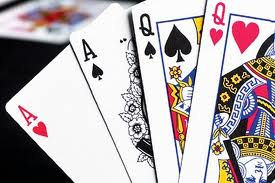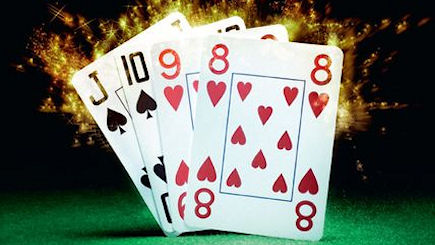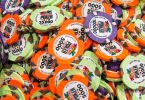No doubt everyone reading this column has at least heard of Pot Limit Omaha, if not had a dabble here and there to see what all the fuss is about. It’s a hugely entertaining variant where the action is fast and chips fly faster than a Dutch speed skater. But it’s also a game where inexperienced players get themselves into trouble because they don’t understand the underlying fundamentals that serve as a point of difference between PLO and its closet cousin, Hold’em.

Yes, Omaha is similar to Hold’em in that once players are dealt their cards, there follows a round of betting and we see a flop, turn and river just as we would in the more universally popular variant of the game. Hand rankings are also identical, moving up from no hand through one pair, two pair, three of a kind, straights, flushes, full houses and so on. But that’s where the similarities stop.
Because each player is dealt four cards instead of two, the opportunity to make a hand is greatly increased so the average winning hand is generally going to be much bigger than it is in Hold’em. Whereas in Hold’em top pair will often be good, in Omaha you’ll be lucky to get through with top two. Omaha is a drawing game, which means you should be looking for starting hands that have a good chance to make straights, flushes or combo draws.
This is by far the most common mistake made by inexperienced players trying their luck at Omaha. Whereby a pair of Kings is a great starting hand in Hold’em, a hand such as K-K-3-2 in Omaha is not very good at all because it is so hard to improve upon – and as we noted, one pair hands are not going to cut it in this game.
Instead, you should be looking at hands such 8-9-10-J double-suited which has the potential to flop all sorts of strong made hands or monster draws. Likewise, let’s look at that K-K-3-2 hand. There is nothing wrong with taking your K-K to the flop, but it is best to do so with a hand like K-K-J-10 double-suited (or with at least one suited K) where flopping a set isn’t the only way you can improve on the flop.

This leads us to another mistake players regularly make in Omaha – playing too many hands. It’s very easy to get carried away in Omaha. Not only do a lot of players limp in at the lower limits – all of them making this very same mistake of wanting to see every flop – but with four cards in your hand there is a common misconception that you are always a chance of flopping a great hand. This is a furphy and even if you decide, for some reason, to call with A-7-9-2 and the flop comes a seemingly healthy 7-9-3 for top two pair, the only hands you are going to get serious action from are likely to be sets or big draws which don’t leave you with the huge equity you might expect.
The other common mistake we will look at today comes after the flop and involves getting it in with a draw that isn’t to the nuts. In Hold’em, a flush draw is a flush draw, so if you hold 4-5 suited with a draw and your trump card comes on the turn, you will usually have the best hand.
In Omaha, the chances of your opponent also holding a flush draw is much higher. The same applies to a straight draw. It’s nice when you hold 8-9 on a 10-J-Q board in Hold’em, but in Omaha the greater number of cards dealt also means there is a far greater chance of an opponent holding the dreaded A-K. The best way to think about it is this: when you’re playing Omaha with a weak draw and the chips start flying, how likely is it your opponent is doing so with a hand or draw weaker than yours? If the answer is “highly unlikely”, it’s time to fold.
Omaha is a great game, but like all variants it takes time to master. Start your Omaha education by focusing on avoiding these common mistakes and at least you will have a better grounding than many of your lower limit peers.







